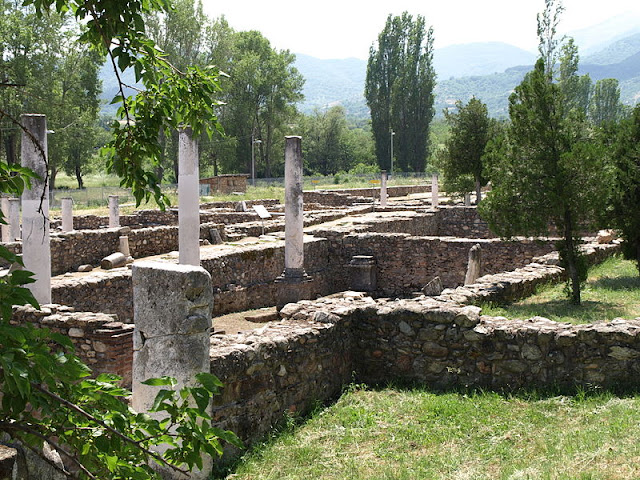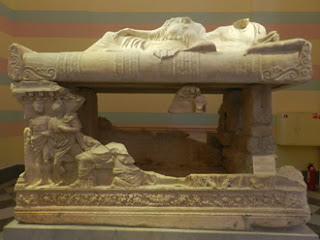Maybe...
Our ship received the certificate, "gas free",
loaded at the former Greek colony on the Black Sea,
the ancient Ordas, Odessa today,
and with engines full power, we are on our way
towards the Marathon coastline.
Maybe I had drunk too much wine,
maybe I ate too much beef roast,
maybe the gravity of the name of the coast,
were the reasons I found myself in a military post,
with a spear and with a heavy shield,
in between Greeks and Persians battlefield.
Mysteriously I found myself now in ancient times.
(This has happened before according to the New York Times).
In 490 BC a Persian army of over 60,000 men,
plus cavalry, several thousand, perhaps ten,
Invaded Greece and began to ravage the coasts..
Athenians were not gracious hosts,
and the barbarians came under vehement attack…
The stately paean went on the Athenians lips…
Persians, rushed to recede and board their ships
(number of ships which ours outstrips)…..
_____________
While cerebrating their great victory,
the gloriest in Greek history,
the Athenian leader noted that the Persian ships,
were heading south, doubling back streets,
intended to attach Athens before the army could return.
Everywhere was widespread surprise and concern ...
The field marshal ordered the best horseman to go warn…
The soldier said quietly, as of yet there was no horse born
fast and large enough to traverse the distance...
Then, field marshal ordered with persistence,
the fastest courier to take over the mission,
i.e. to alert residents to fight according to the tradition,
until the Athenian army could reach the town
Athens must not, must not bow down…
Pheidippides the fastest messenger began to run ...
this same distance from Marathon to the city,
as the Olympic Games Committee,
in defined this distance as an official sport)...
If Pheidippides will arrive first, he might thwart
the Persian invasion and thus save
his citizens from the murderous barbarian wave.
_________________
He arrives and shouts we are trapped, "...get guns,
old men, women... and children, fight my beloved ones…."
They dress up in uniforms to resemble troops ...
Many have found such uniforms in theaters, In troupes…
________________
When the enemy ships arrived near the city,
the Persian leader said disappointed "what a pity..."
when he saw with awe an enormous army lined up on the shore.
He ordered the end of the campaign and slammed the cabin’s door..
_______________________________________________________
_______________________________________________________
Texts and Narration: Odysseus Heavilayias - ROTTERDAM //
Language adjustments and text adaptation: Kellene G Safis - CHICAGO//
Digital adaptation and text editing: Cathy Rapakoulia Mataraga - PIRAEUS
* item 3
______________________________________________________________
 |
| Painting of Pheidippides as he gave word of the Greek victory over Persia at the Battle of Marathon to the people of Athens. |
* Pheidippides,
(Greek: Φειδιππίδης, sometimes given as Phidippides, by Herodotus and Plutarch, or as Philippides) is the central figure in a story that was the inspiration for a modern sporting event, the marathon.
Pheidippides is said to have run from Marathonto Athens to deliver news of a military victory against the Persians in the Battle of Marathon.
isos...











































